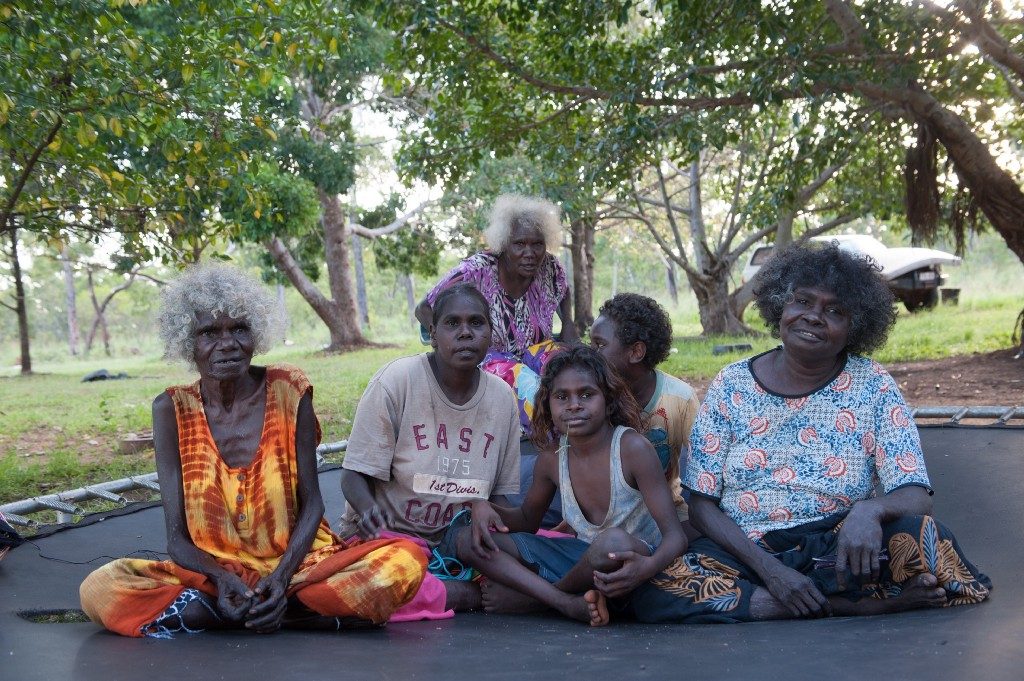Molly Reynolds specializes in screen-based storytelling and digital media production. When she isn’t earning a living as a consultant in the digital sphere, she makes documentaries, including “Still Our Country,” “What Makes Me,” and “Twelve Canoes.” (Press materials)
“Another Country” will premiere at the 2016 Hot Docs Film Festival on April 29.
W&H: Describe the film for us in your own words.
MR: It took me 18 months to craft the 75 minutes of the film. Later, when it came to preparing the press kit, there was more head-banging — to thrash out a summary of those 75 minutes. I find this process of distillation difficult, but I’m going to use the summary that best speaks to “Another Country.”
The great Australian Aboriginal actor David Gulpilil tells the tale of “Another Country,” a story about what happened when his people’s way of life was interrupted by ours.
This documentary speaks to the havoc caused by the superimposition of a new culture over an old culture and the consequent problems in diverse areas of daily life, such as time, money, garbage, and errant kangaroos.
W&H: What drew you to this story?
MR: I’m attracted to many stories that make compelling documentaries, but it’s usually a certain set of circumstances that gets the documentary happening. There needs to be a curiosity and engagement with the topic, the means to make it, willing participation, and strong working relationships.
Often I don’t know what the story actually is until I am making the documentary. The refining of that story and capacity to articulate it begins to happen in the edit suite and deep into the process.
With “Another Country,” I knew that I wanted to speak to the clash between Australian mainstream and indigenous cultures. We didn’t settle on the themes of time, rubbish, and money until we started organizing the images that spoke to everyday life in this remote community.
W&H: What do you want people to think about when they are leaving the theater?
MR: I would appreciate that they made an effort to see the film. I will admit to preferring that people dislike the work rather than be indifferent towards it — a strong response means that it has created some strong emotion and engagement with it.
W&H: What was the biggest challenge in making the film?
MR: The biggest challenge was holding steadfast to the belief that we did actually have a documentary in the making — which we didn’t know for sure until we were in the edit suite.
Even then, it took time to reveal itself. Meanwhile our team and talent were jumping over moons on my say so.
W&H: How did you get your film funded? Share some insights into how you got the film made.
MR: It’s complicated. In Australia, some projects need an inflated budget in order to access funding thresholds and incentives — with this project, consideration was given to making the budget as lean as possible. By definition it is a low-budget film although we able to benefit from sharing resources with the feature film “Charlie’s Country,” and the experimental documentary, “Still Our Country,” which were being shot concurrently.
This sharing ranged from the accounts, catering, and sound library. We were an extremely small crew. Post-production was equally lean. Generally producer/writer/directors on low-budget productions service all aspects of the film, from organizing flights to writing press kits.
W&H: What’s the biggest misconception about you and your work?
MR: When it comes to documentaries, reputation can build on the subject matter rather than on the work itself. I have now made four projects with the Ramingining community, so people think that I specialize in indigenous issues, but my repertoire is broader.
W&H: What’s the best and worst advice you’ve received?
MR: I think I’ve received the best advice when I don’t know that I’m receiving it. When I think of the people I know and admire most, I don’t recall the advice I’ve been given but I know I admire them in part because of the guidance and support they have given me.
In terms of career, I am so pleased that I didn’t follow the advice to play it safe. Playing it safe is fine when it comes to matches and chainsaws but not when it comes to professional ambition.
W&H: What advice do you have for other female directors?
MR: Don’t play it safe — most adventures and misadventures offer opportunity.
W&H: Name your favorite woman-directed film and why.
MR: The word “favorite,” for me, is an ephemeral state because it depends on my mood, my memory, and the choices at hand. Also putting one film on the table will necessarily exclude many other outstanding female filmmakers and films.
And yes, I have sidestepped the question!







